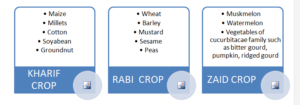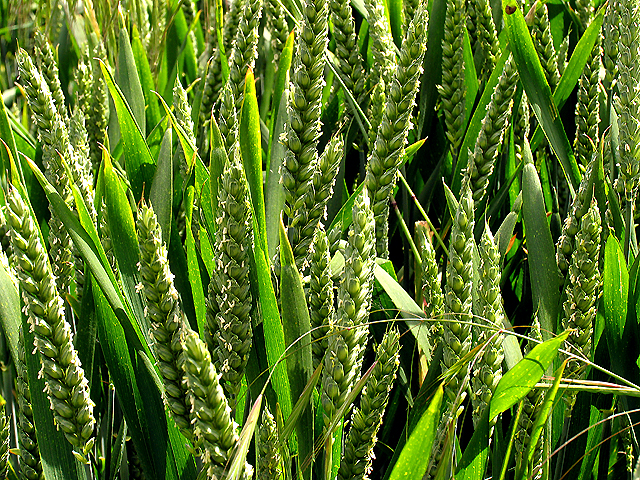NEED OF CROP PRODUCTION:
- Crop production refers to growing crops for domestic and commercial purposes.
- All living organisms require food for getting energy, growth and being healthy but there are only Plants and some bacteria can prepare food by the process of photosynthesis and all animals directly or indirectly depend on plants for their food.
- Photosynthesis is a metabolic process by which green plants (chlorophyll containing plants) produce their organic food (glucose) by using inorganic raw materials, CO2 and water in presence of light energy.
- Human population of India is about 1.3 billion and world population is more than 7 billion and it is increasing continuously with a high rate hence it is necessary to increase the production of crops and its management for providing food to this increasing population.
For providing food to all we need:
-
-
- Regular production
- Proper management
- Proper distribution of food
-
CROP PRODUCTION:
- Ancient people were nomadic
- Farming started 10000 years ago.
- The farmers of the Indus Valley civilization cultivated the crops of wheat, barley, peas, lentils, linseed and mustard.
CROP:
When plants of the same kind are grown and cultivated at one place on a large scale then it is called a crop. For example, crop of wheat means that all the plants grown in a field are that of wheat.
CROP IN INDIA:
In India large variety of crops cultivates because soil types and climatic conditions like temperature, humidity and rainfall vary from one region to another. Accordingly, there is a rich variety of crops grown in different parts of the country.
TYPES OF CROPS:
- The major crops in India can be divided into four categories viz.
- Food grains : Rice, Wheat, Maize, Millets and Pulses
- Cash Crops: Cotton, Jute, Sugarcane, Tobacco and Oilseeds.
- Plantation Crops: Tea, Coffee, Coconut and Rubber and
- Horticulture Crops: Fruits and Vegetables.
- On the basis of season, the crops in India can be divided into :
- Kharif crops: The crops shown in the rainy season (June to September)
- Rabi crops: The crops grown in the winter season (October to March)
- Zaid crops: This crop is grown in some parts of country during March to June.

Many crops are specific to a particular season and cannot grow in another season for examples, Wheat plants required cold climate for its growth and paddy required a lot of water. Therefore wheat is shown in winter season whereas paddy is in rainy season.
ASSIGNMENT:
- Fill in the blanks:
- The same kind of plants grown and cultivated on a large scale at a place is called……………………
- In India, crops can be broadly categorized into three types based on season- ………………, ………………..and ………………
- Give two examples of each.
- Kharif crop
- Rabi crop
- If wheat is sown in the kharif season, what would happen?
- Why can paddy not be grown in the winter season?
- Why does the large variety of crops shown in India?
